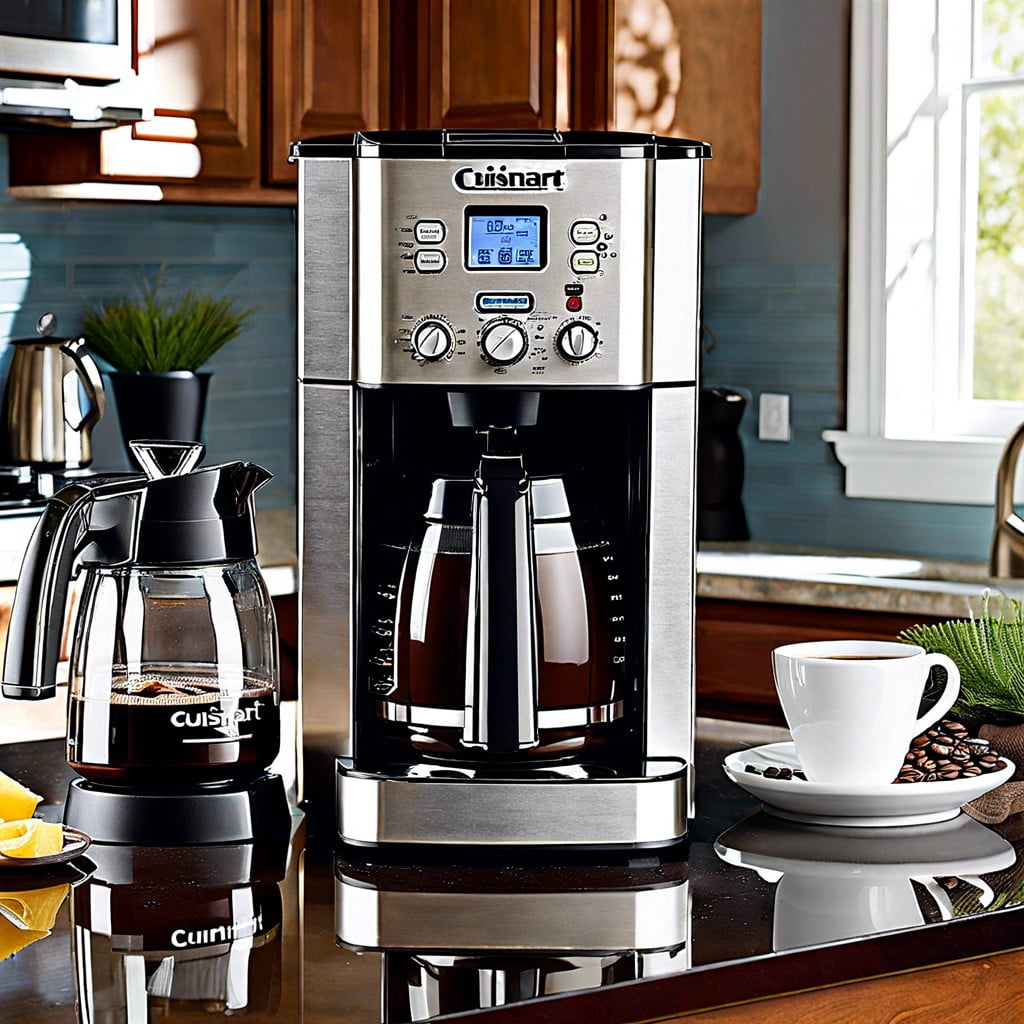Learn the simple steps to clean your Cuisinart coffee maker for a fresh-tasting brew every time.
How Often to Clean a Cuisinart Coffee Maker

Like any good coffee connoisseur knows, a clean machine is the secret to a splendid brew. Aim to deep clean your Cuisinart coffee maker every three to six months to prevent mineral buildup and maintain its brewing performance. If your tap water is hard, containing high mineral content, you might need to clean your machine more frequently. Also, if you notice an increase in brewing time or a change in the taste of your coffee, it’s time to roll up your sleeves—it’s cleaning time.
For daily maintenance, a quick rinse of the carafe and a wipe-down of the machine’s exterior after each use will do wonders. This prevents coffee oils and residue from affecting your next pot. Remember, a regular clean-up routine will prolong the lifespan of your appliance and keep your coffee tasting great.
What You’ll Need
Gathering the right tools before starting is like espresso; it sets the foundation for a seamless cleaning experience. You’ll need white vinegar, which acts as a natural descaler to remove mineral buildup. Fresh water is also crucial, serving as the “rinse cycle” to flush out vinegar remnants. A clean, dry cloth will add the finishing touch, wiping away any stray grime and leaving your machine spotless. Lastly, don’t forget a sink or basin for easy disposal of solutions. With these essentials at hand, you’re prepped and ready to embark on the journey to a pristine coffee maker.
Mix a Vinegar Solution
Vinegar is your trusty sidekick in battling mineral buildup; it’s the unsung hero of kitchen hacks. To concoct this cleaning elixir, simply blend equal parts water and white vinegar. For an average-sized Cuisinart coffee maker, a one-to-one ratio usually entails using 4 cups of each. This solution is gentle, natural, and highly effective at dissolving limescale and other residues that might be cramping your coffee style.
Remember to keep it cool by using cold water, as warmth isn’t necessary at this stage and it’s important to reserve heat for later steps in the cleaning process. Pour the solution into the water reservoir, prepping your machine for what’s essentially a spa day. This simple mixture helps maintain the brew’s flavor integrity and extends your coffee maker’s lifespan. Consider this one small step for you, one giant leap for your coffee maker’s well-being.
Initiate the Self-Clean Process
Pour the vinegar mixture into the water reservoir. Next, locate the “Clean” button or setting on your Cuisinart coffee maker – this will start the decalcifying process. Press the button. The machine’s LED will likely flash to indicate that the cycle is active.
While the coffee maker does its magic, be patient. This cycle is longer than brewing coffee because it’s busy dissolving mineral buildup. Trust the process – the machine knows the drill. After the cycle ends, the coffee maker will beep, signaling that it’s time to move on.
But here’s a pro tip: while waiting, resist the temptation to tinker. Don’t open the lid or push any buttons. Disturbances might disrupt the cycle, leaving you with a half-clean machine. Remember, good things come to those who wait.
Run a Cold-Water Cycle
After the vinegar solution has done its job cutting through buildup, it’s time to rinse away any lingering traces. Think of it like cleansing your palate between coffee tastings—a fresh start for your machine. Fill the water reservoir with cold water to the maximum fill line.
Hit the brew button and let your Cuisinart work its magic, this time with just plain water. It’s essentially taking a clear water bath. Once completed, toss the water from the carafe. You might want to repeat this step a couple of times, just to make sure all the vinegary vestiges are gone. Trust me, your next cup of coffee will thank you for this extra step. Clear, clean water cycles guarantee that the only taste in your morning cup is the rich, full flavor of your chosen beans.